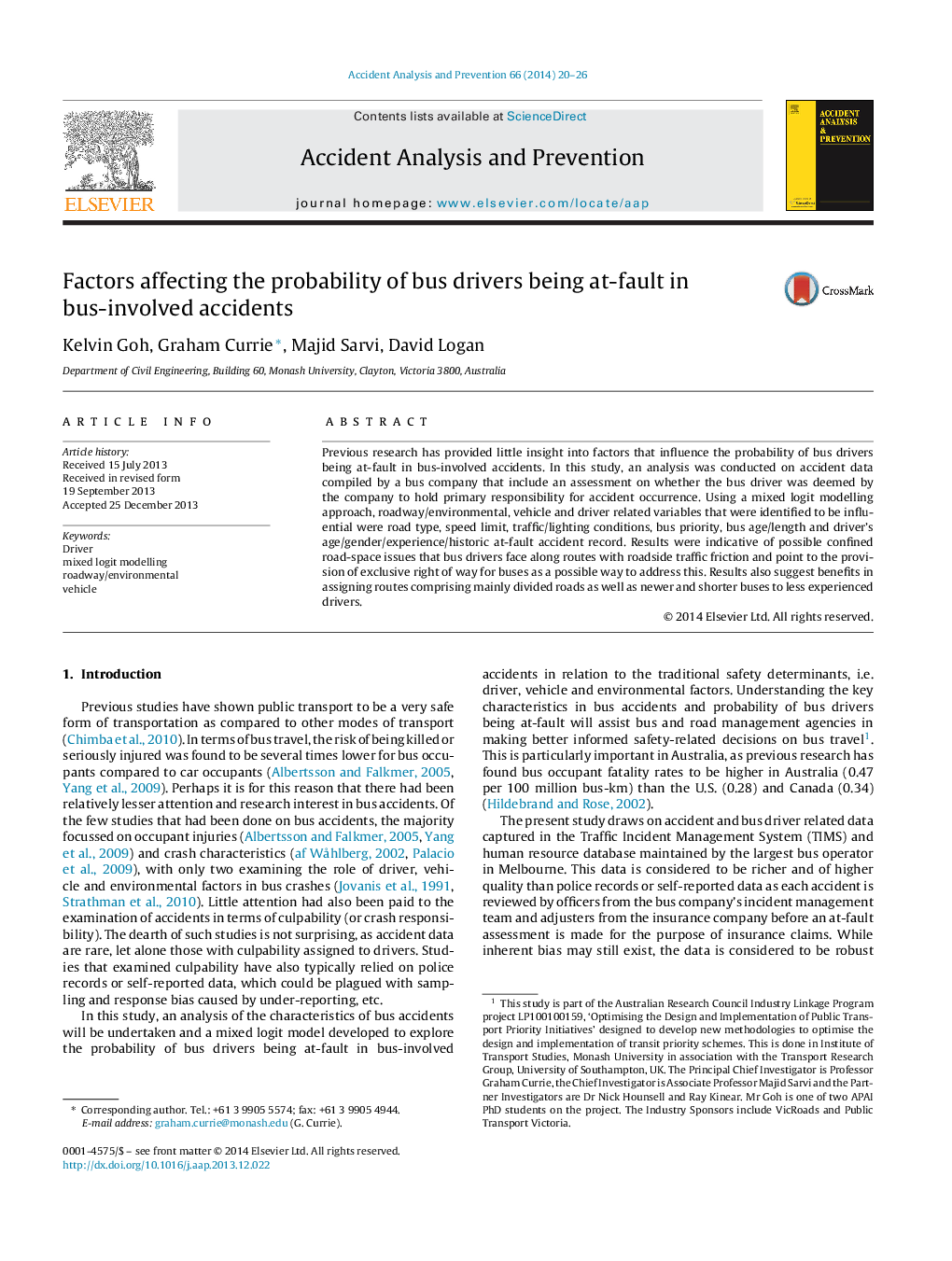| Article ID | Journal | Published Year | Pages | File Type |
|---|---|---|---|---|
| 572365 | Accident Analysis & Prevention | 2014 | 7 Pages |
•Bus accidents in Melbourne, Australia, were analysed.•Bus–vehicle and bus–objects collisions were found to be the most common.•Mixed logit modelling was also done to identify factors affecting probability of drivers being at-fault in accidents.•Model results show that these factors vary across drivers.•Findings suggest benefits in assigning shorter/newer buses and routes with bus priority to less experienced drivers.
Previous research has provided little insight into factors that influence the probability of bus drivers being at-fault in bus-involved accidents. In this study, an analysis was conducted on accident data compiled by a bus company that include an assessment on whether the bus driver was deemed by the company to hold primary responsibility for accident occurrence. Using a mixed logit modelling approach, roadway/environmental, vehicle and driver related variables that were identified to be influential were road type, speed limit, traffic/lighting conditions, bus priority, bus age/length and driver's age/gender/experience/historic at-fault accident record. Results were indicative of possible confined road-space issues that bus drivers face along routes with roadside traffic friction and point to the provision of exclusive right of way for buses as a possible way to address this. Results also suggest benefits in assigning routes comprising mainly divided roads as well as newer and shorter buses to less experienced drivers.
